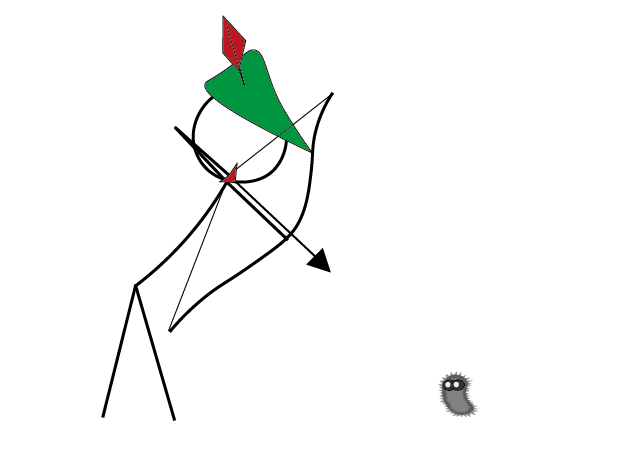Irresistin — Two are better than one


What are some characteristics a substance needs to have to be considered the perfect antibiotic? Ideally, it is effective against gram-positive and gram-negative bacteria, resistant against (attention!) resistances, easy and cheap to produce, free from side effects and maybe even come with a backup mechanism of action to guarantee that the pathogen is effectively killed. Too good to be true? Not anymore!
Scientists recently reported a new substance that meets all of these criteria: Meet Irresistin.

The characteristic that makes Irresistin stand out is its dual mechanisms of action. Therefore, it can use two completely different and separate mechanisms to attack the bacterium of choice. On one hand, the antibiotic does inhibit folate (vitamin B9) metabolism. On the other hand, it can attack the bacterial cell membrane. While targeting the folate cycle causes the bacteria to be inhibited in its DNA synthesis, attacking the bacterial cell membrane destroys the layer that protects the microorganism from its surroundings and keeps its inside conditions constant. No matter how Irresistin works in detail, both independent mechanisms lead to the same result: the bacterial cell being damaged.
To make it easier to understand: here is Robin Hood (everything is easier to understand with Robin Hood by your side!)

Robin Hood uses bow and arrow to fight his enemies. With the help of the spiky arrowhead, he can break the barrier of his target (human skin or armor; equivalent to the bacterial cell membrane). In most cases, the job is done with that.
However, even the best archer can miss his target (not saying Robin Hood ever did) and a grazing shot will hardly be enough to stop the enemy once and for all.


In this case, it can be handy, if the arrowhead was soaked in poison. This way, even a graze shoot can become a serious threat.


Basically, this is exactly what Irresistin does. It got sort of an arrowhead to destroy the bacterial cell membrane, but it also got its own sort of poison that attacks the folate synthesis — just in case that destroying the cell membrane didn’t do the job already.
If you haven’t been impressed by now, we’ve got you covered! Scientists have thus far been unable to provoke any resistance mechanisms in any tests. However, this doesn’t guarantee that resistance will never occur in the future, but it does make it unlikely.
Overall, the results of the study are quite promising! Irresistin’s dual mechanism of action, its low rates of antibiotic resistance (especially compared to antibiotics), and its efficacy against both gram-positive and gram-negative bacteria are making it the rising star on the horizon. Lab tests even proved its ability to kill Acinetobacter baumanii – a highly resistant pathogen of the ESKAPE group!
Can it get any better?!

If you want to read more, check out the original paper by James K. Martin II et al. 2020.